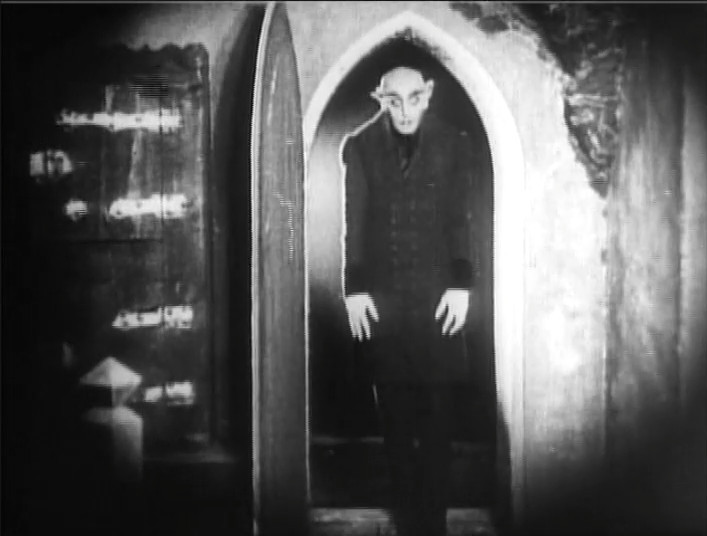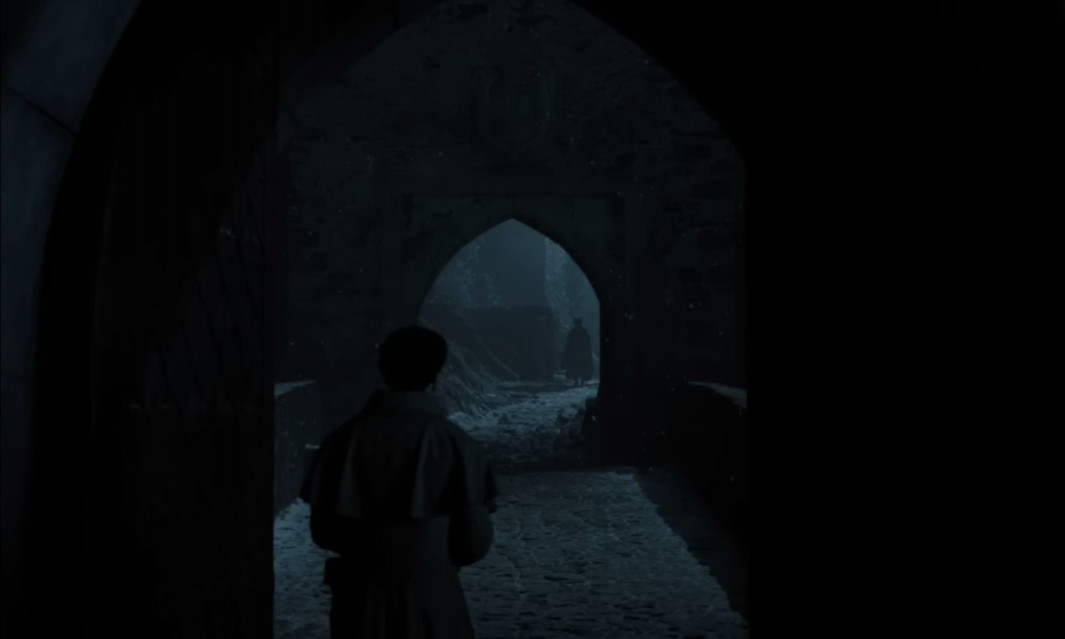Our no-account Count
I made a rare trip to the cinema to see the 2024 Nosferatu remake. I liked it overall—not to the point that I feel I'll need to revisit it again and again, as I have felt with a move like Floating Weeds (「浮草」, 1959) or Stalker (Сталкер, 1979), or In the Mood for Love (《花樣年華》, 2000), but there were some specific scenes that had me actually enraptured. What I think is interesting and worth talking about is how it builds on and departs from its source material, the 1922 German Expressionist classic Nosferatu — Eine Symphonie des Grauens and, by extension, Bram Stoker's novel Dracula and the mythological landscape it created.

Subtext made text
Since at least the original 1897 Dracula novel, the position of the vampire within the pop media monster pantheon is defined by two broad qualities: vampires are 1) undead, and 2) seductive (read: sexy). The signs that a vampire is not quite living vary somewhat between texts, but the sexual subtext of the vampire is almost always apparent in the way the vampire covets and consumes the victim's blood, especially through a bite to the neck. The Key & Peele “Sexy Vampires” sketch explores this with a more self-restrained, psychosexually sublimated vampire who declares, “I just don't understand why has everything got to be all sexual and licky.”
The unauthorized 1922 German movie adaptation Nosferatu and the 1931 Usonian movie adaptation Dracula, each influential in its own right in terms of both the language of cinema itself and the popular lexicon of vampires, told broadly the same story but conjured wildly divergent visual imaginings of the vampire. Count Orlok of Nosferatu has sunken eyes, hollow cheeks, and noticeably extended, curling fingernails. Combined with his prominently displayed front incisors, these features are often said to resemble those of the plague-carrying rats that he brings across the sea. Combined with an exaggerated aquiline nose, they are sometimes characterized as drawing on antisemitism. They also lend Orlok a certain appearance of cadaverousness, as if his soft tissues had begun to retract and deteriorate; the effect is enhanced by actor Max Schreck's theatrically rigid and restrained physical performance evoking rigor mortis. Boris Karloff's Count Dracula is more conventionally sexy, his face handsome and unremarkable, his bearing and movement elegant. Unlike the bald Orlok, he maintains a full head of dark, neatly coiffed hair The signs that he is not entirely among the living are more subtle, like his inability to cast a reflection in a mirror.
The new Count Orlok of the 2024 Nosferatu remake takes the cadaverous vampire to an extreme. Orlok is now no longer merely arthritic and wasting away but actively, visibly rotting; at times we even see maggots crawling through his flesh. He has also been shaped into a more explicitly sexually domineering figure, very tall and broad-shouldered, with a heavy mustache, and possessing a big dick we see in a brief glimpse when he is awoken from his coffin.
The film makes explicit the often implicit sexual symbolism of the vampire in myriad other ways, starting with its opening scene, a prologue in which the movie's heroine Ellen invites spiritual possession by the vampire in her youth, culminating in an on-screen orgasm. Later, when the naked vampire feeds upon her husband Thomas Hutter, the plausible deniability of the vampire biting Hutter's chest yields to a more obvious shot of the two on the floor as the vampire thrusts his hips. Ellen even mentions this in sexual terms later, intimating in her Nineteenth Century way that the vampire told her that Thomas had submitted to him sexually. (I think her words are something like “He said that you were like a lily woman before him.”) This eventually leads into an on-screen tryst between the couple, goaded on by Ellen's teasing assertion that her husband could sexually satisfy her like the vampire could. In fact, the sexual contest over Ellen, between the vampire and her husband, and how Ellen navigates and resolves that contest, is really the single unifying narrative arc of the film, resembling somewhat the contest in The Phantom of the Opera between the titular Phantom and the Vicomte Raoul de Chagny over the affections of the ingenue Christine Daaé. The movie seems more generally interested in the psychosexual implications of the vampire mythos, though, and even includes an explicit scene of necrophilia that doesn't involve vampires, raising the question of what it means that death and sex are so bound together in the mythical figure of the vampire. Moreover, combined with images evoking the medicalization of “hysteria” and the ecstatic visions of religious mystics, this stew of sex, horror, and our not-so-distant social past situates Ellen as a figure wrestling with her feminine sexuality as an expression of power, making her a more independent narrative agent than in the 1922 movie.

The silent snow
I mentioned before that there were scenes in the 2024 Nosferatu remake that really enraptured me. Generally, these were scenes that directly recreate shots from the 1922 movie. It's not merely that those shots were recreated, but that their symbolic power has been digested and powerfully imagined in a new context, so that their appearance is familiar but also subtly and effectively builds on technological advances that have occurred in the intervening years and invokes these images in a way that seamlessly bolsters the new movie's expanded narrative; after all, the 2024 film expands on it's predecessor's runtime by about 50% and so necessarily expands upon its characters and their neuroses. In particular I'm thinking of the scene in the remake where Thomas Hutter enters Orlok's castle for the first time, which is modelled compositionally on a corresponding sequence in the 1922 movie, but ratchets up the supernatural terror of the scene with an uncannily expansive depth of field, severe shadows, sound design that emphasizes the grinding hinges of the castle gate against the backdrop of ever-visible but completely silent snowfall, and a desaturated blue color grading that borrows from the monochrome tinting of scenes in prints of the older movie, but in a context where other events happen in full color. This scene comes at the end of a longer sequence that maintains a low-saturation, largely dialogue-free silent movie sensibility but nevertheless deviates from the silent movie on certain key narrative points. Hutter does not merely awake refreshed at sunrise in his travel lodgings, but instead awakes from a sleepwalking episode in a village that has been deserted overnight to find his horse stolen. He then boards not normal horse-drawn coach in the mountains, but an empty, driverless coach that somehow stops and opens for him on the road. Later we get another iconic visual callback to the 1922 movie when the vampire's shadow ascends a staircase in his victims' home, but in the 2024 movie this arrives amidst interpersonal drama amongst the residents of that home and somehow seems to carry more psychic weight for it.
Overall, I found the movie worked best for me when it fully indulged in these symbolically rich visual flights of fancy. I found the dialogue competent, expressive of the movie's characters and sometimes entertaining in its own right, but I think the movie could have leaned more on the unsubtle and sometimes intoxicating strength of its visual lexicon and left a few more things unverbalized.
Where not otherwise noted, the content of this blog is written by Dominique Cyprès and licensed under a Creative Commons Attribution-ShareAlike 4.0 International License.